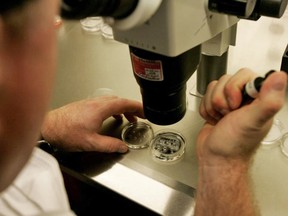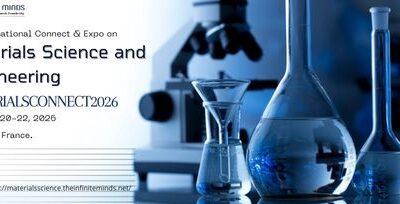Science
Scientists Transform Human Skin Cells into Fertilizable Eggs

Scientists in Paris have achieved a groundbreaking milestone by converting human skin cells into fertilizable eggs, which they successfully fertilized with sperm in a laboratory setting. This pioneering research, announced on March 15, 2024, could one day provide new hope for individuals facing infertility, a condition that affects approximately one in six people globally.
While the technology, known as in-vitro gametogenesis (IVG), remains years away from potential clinical application, the implications are significant. According to Paula Amato, a co-author of the study and a researcher at Oregon Health & Science University, this advancement could enable older women and those without viable eggs to conceive biologically. Furthermore, it could allow same-sex couples to have children genetically related to both partners.
Breakthrough Methodology
Recent advancements in reproductive science have led to notable progress, including a study from Japan in July 2023 that created mice with two biological fathers. However, the current study, published in the journal Nature Communications, marks a significant leap by utilizing human DNA rather than that of mice.
The researchers employed a technique called somatic cell nuclear transfer, similar to the method used to clone Dolly the sheep in 1996. Initially, they removed the nucleus from standard skin cells and transferred it into a donor egg that had also undergone nuclear removal. A critical challenge arose: human skin cells contain 46 chromosomes, while eggs typically have 23.
To address this, the scientists developed a process they termed “mitomeiosis,” which simulates natural cell division to eliminate the extra chromosomes. Ultimately, they produced 82 developing eggs, termed oocytes, which were fertilized through in vitro fertilization (IVF). After six days, less than nine percent of these embryos reached a stage suitable for potential implantation into a uterus.
Future Implications and Challenges
Despite the low success rate, the researchers emphasized that this figure aligns with natural reproduction, where approximately one-third of embryos reach the viable “blastocyst” stage. Amato estimates that achieving genetically normal eggs with the correct chromosomal makeup is at least a decade away.
Ying Cheong, a reproductive medicine researcher at the University of Southampton in the United Kingdom, praised the study as an “exciting” breakthrough. She noted that it demonstrates for the first time that DNA from ordinary body cells can be activated and modified to replicate the specific processes that generate eggs and sperm. Cheong stated, “While this is still very early laboratory work, in the future it could transform how we understand infertility and miscarriage, and perhaps one day open the door to creating egg- or sperm-like cells for those who have no other options.”
Other research initiatives are exploring alternative methods for producing eggs in the lab, such as reprogramming skin cells into induced pluripotent stem cells, which can differentiate into various cell types, including eggs. Amato acknowledged that it remains uncertain which approach will prove more successful, indicating that significant work lies ahead.
The researchers adhered to established U.S. ethical guidelines governing embryo use throughout the study. As this field of research progresses, the potential to redefine fertility and reproductive options continues to grow, sparking hope for those facing infertility challenges.
-

 Politics4 weeks ago
Politics4 weeks agoSecwepemc First Nation Seeks Aboriginal Title Over Kamloops Area
-

 World5 months ago
World5 months agoScientists Unearth Ancient Antarctic Ice to Unlock Climate Secrets
-

 Entertainment5 months ago
Entertainment5 months agoTrump and McCormick to Announce $70 Billion Energy Investments
-

 Science5 months ago
Science5 months agoFour Astronauts Return to Earth After International Space Station Mission
-

 Lifestyle5 months ago
Lifestyle5 months agoTransLink Launches Food Truck Program to Boost Revenue in Vancouver
-

 Technology3 months ago
Technology3 months agoApple Notes Enhances Functionality with Markdown Support in macOS 26
-

 Lifestyle3 months ago
Lifestyle3 months agoManitoba’s Burger Champion Shines Again Amid Dining Innovations
-

 Top Stories2 months ago
Top Stories2 months agoUrgent Update: Fatal Crash on Highway 99 Claims Life of Pitt Meadows Man
-

 Politics4 months ago
Politics4 months agoUkrainian Tennis Star Elina Svitolina Faces Death Threats Online
-

 Sports5 months ago
Sports5 months agoSearch Underway for Missing Hunter Amid Hokkaido Bear Emergency
-

 Politics5 months ago
Politics5 months agoCarney Engages First Nations Leaders at Development Law Summit
-

 Technology5 months ago
Technology5 months agoFrosthaven Launches Early Access on July 31, 2025




















